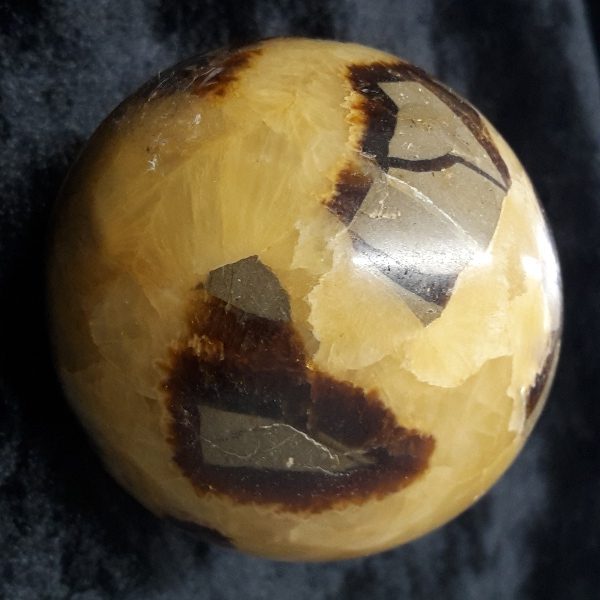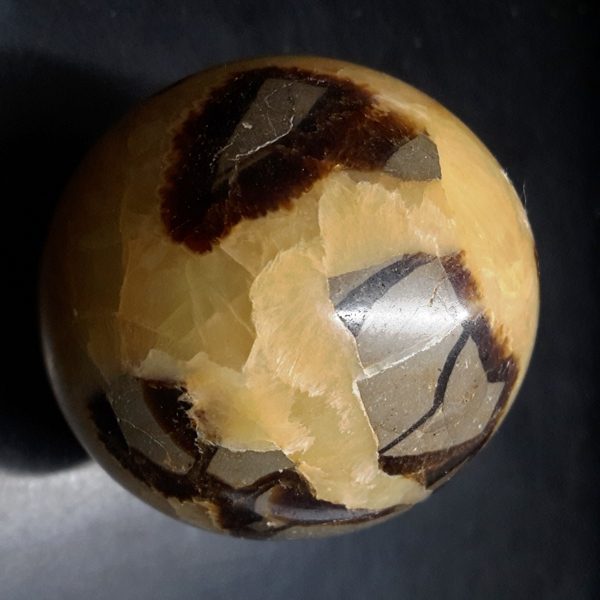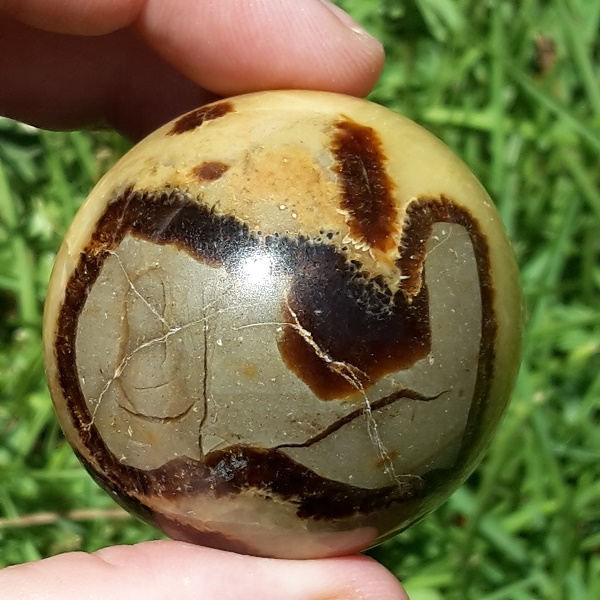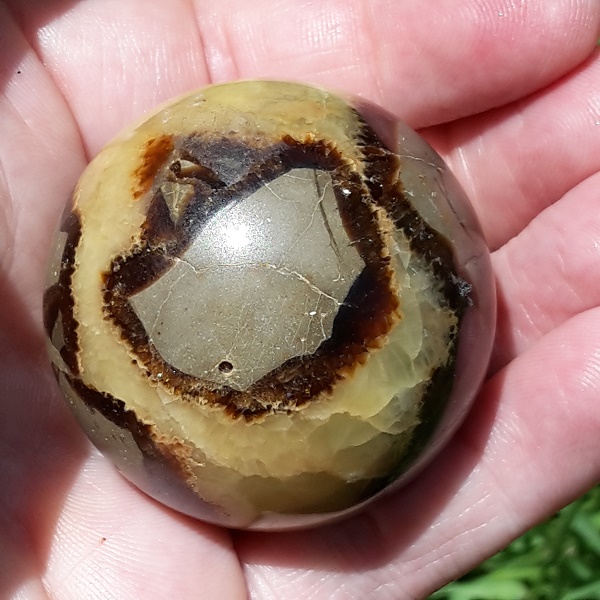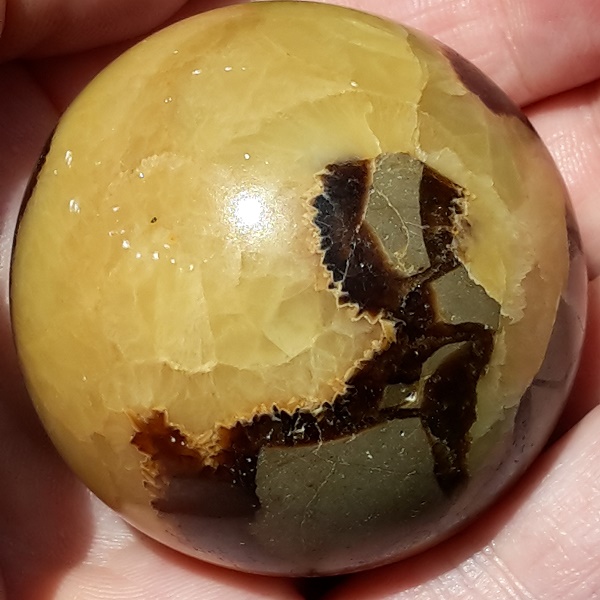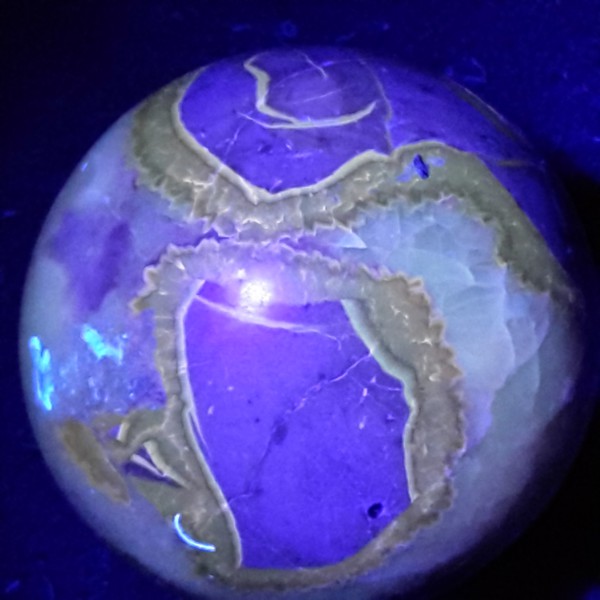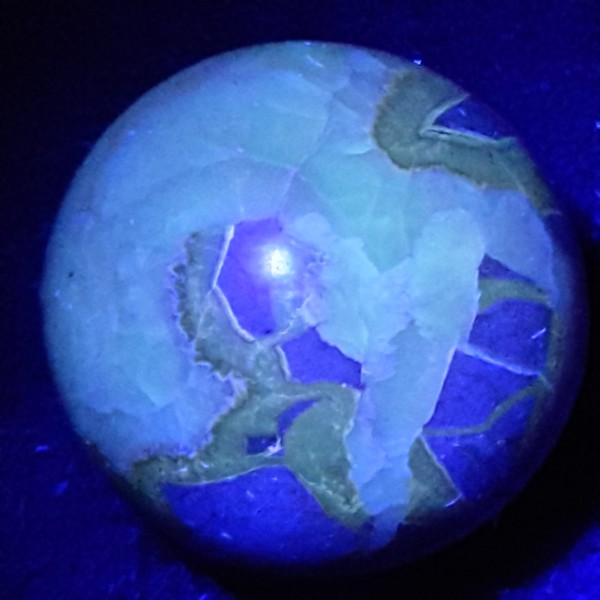No products in the cart.
Fluorescent Specimens, Fossils, Polished Stones, Spheres
SEPTARIAN SPHERE
Availability:
Out of stock
SEPTARIAN SPHERE
A handsome polished Septarian Sphere. An interesting combination fossil and mineral specimen many millions of years old. This Septarian Sphere shows stunning calcification and great marbling geometry. This is a good specimen from our personal collection. This material is also fluorescent. Included is a beautiful Hematite ring stand to display this handsome sphere. Some pics show fluorescence with long wave UV light.
Location:
Madagascar.
Dimensions:
4.3cm, 112g.
Compare
SEPTARIAN SPHERE
A handsome polished Septarian Sphere. An interesting combination fossil and mineral specimen many millions of years old. This Septarian Sphere shows stunning calcification and great marbling geometry. This is a good specimen from our personal collection. This material is also fluorescent. Included is a beautiful Hematite ring stand to display this handsome sphere. Some pics show fluorescence with long wave UV light.
Location:
Madagascar.
Dimensions:
4.3cm, 112g.
How are they formed?
Septarian Concretion or Septarian Nodules were formed during the Cretaceous Period. That was around 50 to 70 million years ago, when sea levels were much higher. Periodic volcanic eruptions killed the smaller sea life which sank to the sea bed and started decomposing. The minerals in the shells and carcasses attracted sea floor sediments which accumulated around the carcasses and formed nodules or mud balls. When the ocean eventually receded, the mud balls dried out and began to shrink and crack. They formed beautiful patterns that you see inside the Septarian Nodules. Over time calcite leeched into the cracks and formed calcite crystals which grew to fill the cracks.
You may also like…
- Crystals, Quartz, Spheres
ROSE QUARTZ SPHERE
A lovely pastel pink Rose Quartz Sphere. This is a good handful and a very nice display piece. Rose Quartz is definitely one stone best displayed in its polished form. Loved by all ages for its colour and warmth, who wouldn’t appreciate such a calming presence gracing their space? A lovely gift or treat. Hematite stand included.
Dimensions:
7cm diameter, 476g.Location:
BrazilSKU: I0422

